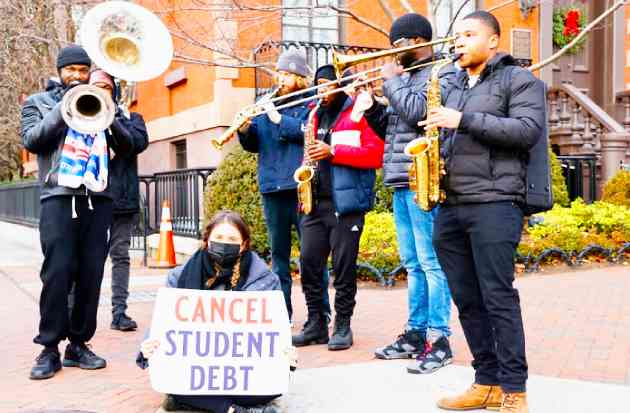Here is the reason why Government Fix to Wipe Away Some Student Loan Debt. If you believe that a federal student loan lender provided you with inaccurate information that cost you money, or if you believe you were unfairly refused loan forgiveness, you may be in luck.

The Department of Education announced on April 19 that it is proposing several changes to the way federal student loans have been treated in the past, notably in the areas of income-driven repayment (IDR) & Public Service Loan Forgiveness (PSLF).
Some student loan credit agencies used to encourage borrowers with problems repaying their debt to put their payments on hold via forbearance (a temporary halt), even though an IDR program would have better served these borrowers in many circumstances.
A borrower’s monthly student loan amount is capped at a proportion of their discretionary income under IDR, which means that if they are jobless, they may owe “zero dollars” each month. The remaining amount is forgiven after 20 or 25 years on an IDR scheme (depending on the one you join).
Also Read: The Best PNC Bank Student Loan Review in 2022
The Department of Education highlighted “inappropriate guidance towards long-term forbearance,” in some cases going above government-imposed restrictions on how long you may put off repaying your debt.
Previous Federal Student Aid investigations “indicate that loan servicers placed students in forbearance in breach of department guidelines, yet when their monthly bill under an IDR plan might have been as low as zero dollars,” according to the agency’s findings. (Due to the COVID-19 epidemic, repayment for all federally issued student loans has been automatically halted from July 2020.)
Adjustment made once
To correct prior mistakes, the government announced a “one-time account adjustment” that will include the previous forbearance for IDR forgiveness in some situations.
In particular, consecutive forbearances of more than 12 months in a row or more than 36 months collectively may now qualify for forgiveness under IDR.
If you work for an authorized government agency or charity, such forbearances may count as “payments” for PSLF, a program that provides to sweep away your student loans following 120 payments.
The year before, the Dept of Education announced that it was loosening the standards for PSLF eligibility. Certain borrowers would be able to retrospectively credit earlier payments toward forgiveness if they applied by Oct. 31, 2022. So, if you believe you could be qualified, you should investigate this as quickly as possible.
According to the government, these actions will “correct prior shortcomings in the management of the federal student loan program,” and they might lead to:
- IDR provides credit to over 3.6 million borrowers for 3 years of additional payments.
- Under the PSLF, at least 40,000 debtors will receive “instant debt elimination.”
Steps to follow
If you believe you were wrongfully placed in forbearance, the government recommends contacting the Federal Student Aid Ombudsman (at StudentAid.gov/feedback) for a set financial.
While implementing these measures has begun, “borrowers may not notice the benefit in their accounts till the fourth quarter of 2022,” according to the Department of Education.
Meanwhile, it intends to tighten its control over forbearance, including prohibiting borrowers from pausing their payments by text and email.
Also Read: Tips On How a Loan Originator Can Help You Get the Best Loan
Furthermore, beginning next year, borrowers will be able to view their volume of IDR-eligible repayments through the Federal Aid site at Studentaid.gov.